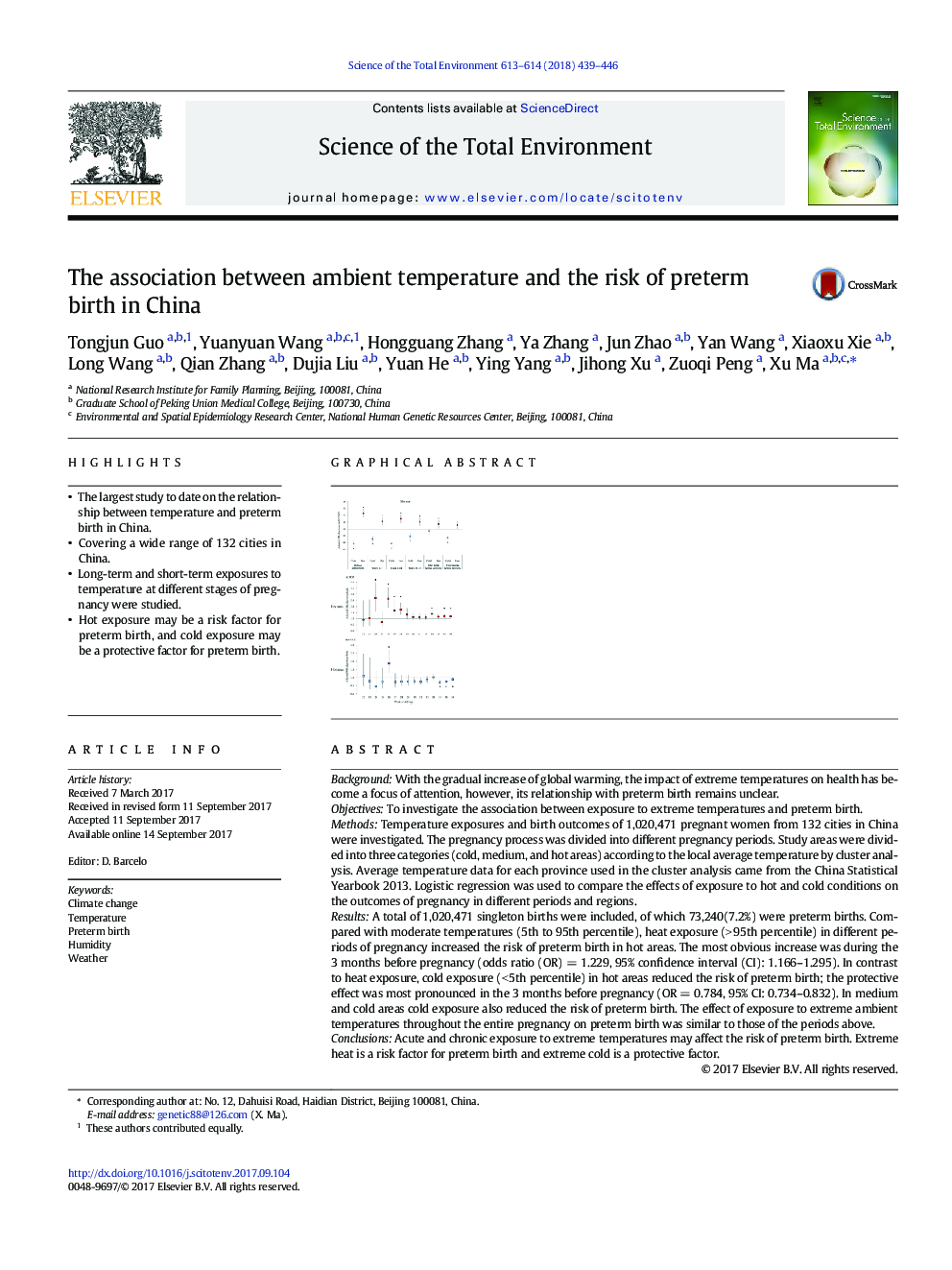| کد مقاله | کد نشریه | سال انتشار | مقاله انگلیسی | نسخه تمام متن |
|---|---|---|---|---|
| 5750106 | 1619690 | 2018 | 8 صفحه PDF | دانلود رایگان |
- The largest study to date on the relationship between temperature and preterm birth in China.
- Covering a wide range of 132 cities in China.
- Long-term and short-term exposures to temperature at different stages of pregnancy were studied.
- Hot exposure may be a risk factor for preterm birth, and cold exposure may be a protective factor for preterm birth.
BackgroundWith the gradual increase of global warming, the impact of extreme temperatures on health has become a focus of attention, however, its relationship with preterm birth remains unclear.ObjectivesTo investigate the association between exposure to extreme temperatures and preterm birth.MethodsTemperature exposures and birth outcomes of 1,020,471 pregnant women from 132 cities in China were investigated. The pregnancy process was divided into different pregnancy periods. Study areas were divided into three categories (cold, medium, and hot areas) according to the local average temperature by cluster analysis. Average temperature data for each province used in the cluster analysis came from the China Statistical Yearbook 2013. Logistic regression was used to compare the effects of exposure to hot and cold conditions on the outcomes of pregnancy in different periods and regions.ResultsA total of 1,020,471 singleton births were included, of which 73,240(7.2%) were preterm births. Compared with moderate temperatures (5th to 95th percentile), heat exposure (>Â 95th percentile) in different periods of pregnancy increased the risk of preterm birth in hot areas. The most obvious increase was during the 3 months before pregnancy (odds ratio (OR)Â =Â 1.229, 95% confidence interval (CI): 1.166-1.295). In contrast to heat exposure, cold exposure (<Â 5th percentile) in hot areas reduced the risk of preterm birth; the protective effect was most pronounced in the 3 months before pregnancy (ORÂ =Â 0.784, 95% CI: 0.734-0.832). In medium and cold areas cold exposure also reduced the risk of preterm birth. The effect of exposure to extreme ambient temperatures throughout the entire pregnancy on preterm birth was similar to those of the periods above.ConclusionsAcute and chronic exposure to extreme temperatures may affect the risk of preterm birth. Extreme heat is a risk factor for preterm birth and extreme cold is a protective factor.
56
Journal: Science of The Total Environment - Volumes 613â614, 1 February 2018, Pages 439-446
